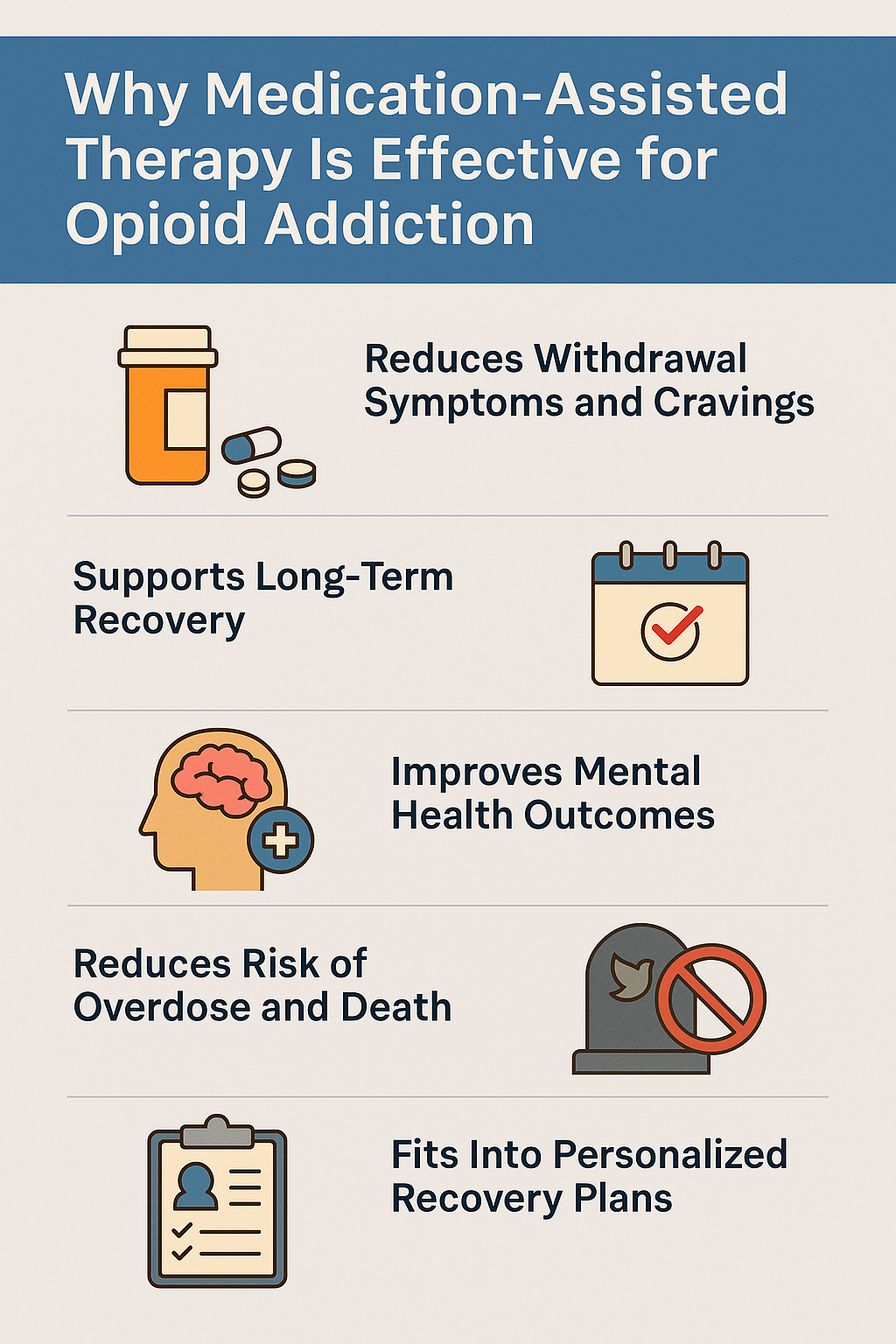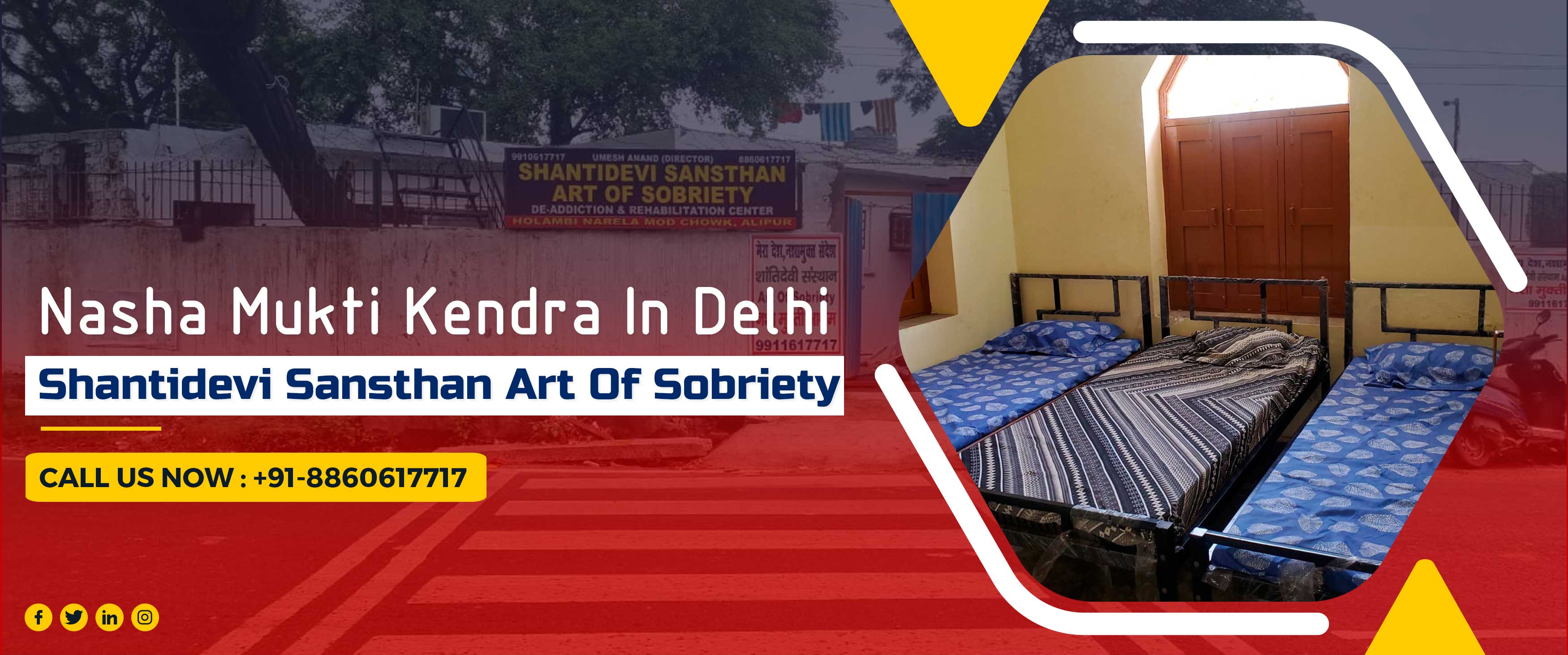Why Medication-Assisted Therapy Is Effective for Opioid Addiction

Strong 8k brings an ultra-HD IPTV experience to your living room and your pocket.
When you or someone you care about is facing opioid addiction, it can feel overwhelming to know where to turn. Detox? Rehab? Therapy? Medications? The options can feel like a maze especially when emotions are already high.
One treatment that’s gained a lot of attention and for good reason is Medication-Assisted Therapy, or MAT. If you've heard mixed messages about it, you're not alone. But the truth is, when used correctly, MAT can be a game-changer in recovery.
What Is Medication-Assisted Therapy?
Medication-Assisted Therapy combines prescription medications with counseling and behavioral therapies. The goal? To treat the whole person physically and mentally not just their cravings or withdrawal symptoms.
Common MAT medications include:
- Methadone
- Buprenorphine
- Naltrexone
These medications help reduce withdrawal symptoms, minimize cravings, and stabilize brain chemistry so people can focus on recover not just survival.
Why MAT Works: It's Backed by Science
Let’s cut through the noise: MAT isn’t “substituting one drug for another.” It’s a clinically proven approach supported by experts and backed by decades of research.
According to the National Institute on Drug Abuse (NIDA), MAT has been shown to:
- Reduce opioid use and overdose deaths
- Improve retention in treatment programs
- Decrease criminal activity
- Support long-term recovery outcomes
It’s not about masking the problem it’s about treating it at the root, with both medical and psychological support.
“Addiction isn’t a moral failing or a lack of willpower it’s a chronic, treatable condition.”
The Physical Side: Easing Withdrawal and Cravings
One of the biggest roadblocks to recovery is withdrawal. It's more than just uncomfortable it's often what leads people back to using.
With MAT, medications like buprenorphine and methadone bind to the same brain receptors as opioids, but without the euphoric high. This helps:
- Lessen the severity of withdrawal symptoms
- Curb intense cravings
- Allow for a safer, more gradual recovery process
And here’s where the comparison between oxycodone vs hydrocodone becomes important. Different opioids have varying levels of potency and effects on the body. Knowing what substance you or your loved one is struggling with helps guide the right choice in medication.
The Mental Side: Rebuilding from the Inside Out
Recovery isn’t just physical it’s deeply emotional. Many people with opioid addiction are also dealing with anxiety, depression, trauma, or unresolved grief. That’s why MAT doesn’t stop with medication.
Most programs include:
- Therapy: individual or group
- Counseling: often focusing on behavior change
- Support services: like vocational training, family education, or relapse prevention
This combination gives people the tools to not only stop using but to rebuild their lives.
Reducing Relapse Risk
Let’s be honest recovery isn’t always a straight line. But MAT dramatically reduces the risk of relapse by keeping cravings and symptoms in check.
When the brain isn’t in panic mode over the absence of opioids, it becomes possible to think clearly, make better decisions, and stick with treatment. And for many, this is the first time in years they feel stable.
Addressing the Stigma
MAT often faces criticism, especially from people who misunderstand how it works. But here’s the truth: recovery looks different for everyone. What matters is what works not what fits someone else’s idea of “clean.”
No one should feel ashamed for using proven, science-based tools to heal.
Final Thoughts: Recovery Shouldn’t Be One-Size-Fits-All
Medication-Assisted Therapy isn’t a shortcut or an easy way out it’s a comprehensive, effective path for many people dealing with opioid addiction. If you're considering this route for yourself or someone close to you, you're not alone and there’s no shame in getting support that meets your unique needs.
Everyone’s recovery journey is different. What matters is finding an approach that offers both safety and hope and sticking with it, one step at a time.
Note: IndiBlogHub features both user-submitted and editorial content. We do not verify third-party contributions. Read our Disclaimer and Privacy Policyfor details.







